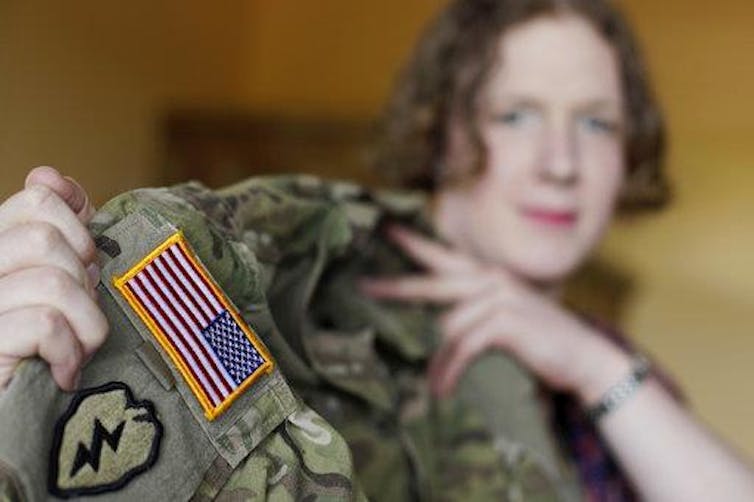
The Trump administration released a memorandum on March 23 that imposes limits on transgender troops and excludes transgender people from enlistment in the U.S. military.
The policy states that individuals with a history of “gender dysphoria” are now disqualified from military service “except under certain limited circumstances.” It defines people with gender dysphoria as “those who may require substantial medical treatment, including through medical drugs or surgery.” This is a deviation from the medical definition of gender dysphoria. The American Psychiatric Association defines it as “a conflict between a person’s physical or assigned gender and the gender with which he/she/they identify.”
Since 2014, we have been working with transgender service members and veterans to better understand their experiences. Our work is part of a large and growing body of scientific research President Donald Trump, and conservatives more broadly, have ignored.
The evidence is conclusive: Transgender people are fit to serve in the U.S. military.
Medical rationale
In the U.S., transgender individuals were officially barred from serving in the armed forces starting in the 1960s. The early prohibition was based on a now-outdated psychiatric classification. Until 2013, the American Psychiatric Association classified transgender people as having “gender identity disorder.” This disqualified them for military service, along with anyone else who exhibited a mental disorder.
Since the 1980s, the U.S. armed forces barred service of any person with a “current or history of psychosexual conditions including but not limited to exhibitionism, transsexualism, transvestism, voyeurism, and other paraphilia.” This view conflates transgender identity with mental illness and distress. It assumes that all transgender people experience gender dysphoria. That is false.
In 2015, the American Medical Association adopted a formal policy stating that there is no medical rationale for excluding transgender people from openly serving in the military.
Serving under a ban
Transgender people have long served in the armed forces. The Williams Institute, a think tank at the University of California in Los Angeles, estimates that roughly 134,000 transgender Americans hold veteran status.
About 15,000 transgender people are currently serving across all branches of the U.S. armed forces, including the National Guard and Reserve forces. The vast majority have served under the transgender ban.
In our research, we have found that transgender service members have had to conceal their identities. In fact, among the transgender service members we surveyed under the transgender military ban, only 16.2 percent reported being “out” as transgender to friends within their military unit. Only 5.6 percent were out to their commanding officer. This has limited their access to support services and health care, and made it difficult to gain institutional recognition.
It is also in stark contrast to their personal lives. The majority of those surveyed reported being out to immediate family members (72.2 percent) and nonmilitary friends (69.4 percent).
Our findings suggest that transgender individuals enlist for many of the same reasons as cisgender men and women, those whose assigned sex at birth corresponds with their gender identity. Transgender people are motivated by educational goals, career aspirations, travel, family history, patriotism and stability. Transgender service members also report few mental or physical health issues that would limit them from meeting fitness criteria.
Research conducted by the nonprofit RAND National Defense Research Institute has found similar evidence. RAND was commissioned by the government to conduct a wide-ranging external study to assess the impact of transgender service.
RAND reported that extending health care coverage for gender transition–related treatments would create only small increases in the budgets for the Department of Defense and Homeland Security. It estimated increases between US$2.4 million to $8.4 million, which represented only 0.04 to 0.13 percent of the departments’ budgets. That is in direct contrast to President Trump’s statement in July 2017 that it would incur “tremendous medical costs.” The report also noted that transgender service has minimal impact on unit readiness and cohesion. It recommended that military fitness policies align with contemporary medical standards.
Impact of a military ban
President Trump’s memorandum referenced inaccurate information. It undermines several rigorous scientific studies, peer-reviewed publications, the expert opinions of military leaders and officers, and the medical recommendations of our nation’s leading professional organizations.
About Today's Contributors:
Brandon Hill, Executive Director of the Center for Interdisciplinary Inquiry and Innovation in Sexual and Reproductive Health, University of Chicago and Joshua Trey Barnett, Professor of Rhetoric, University of Minnesota Duluth
This article was originally published on The Conversation.


















